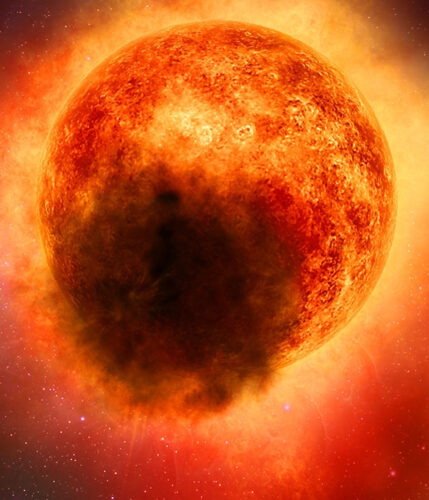
Astronomers have long been fascinated by the explosive deaths of massive stars known as supernovae.
Recently, a potential signal has been identified that could serve as a crucial warning sign, indicating when red supergiant stars are on the verge of going supernova. Red supergiants are enormous, aging stars nearing the end of their lives.
As they fuse heavier elements in a desperate attempt to stave off collapse, they become red and swollen.
However, their fate is sealed, and eventually, these red supergiants will collapse, triggering a cataclysmic supernova event.
In this article, we explore the discovery that could provide astronomers with an advance warning of these spectacular stellar explosions.
The Spectacular Betelgeuse
One of the most famous red supergiants is Betelgeuse, a bright red star in the constellation Orion.
Located approximately 550 light-years away from Earth, Betelgeuse boasts a mass about 18 times that of our Sun.
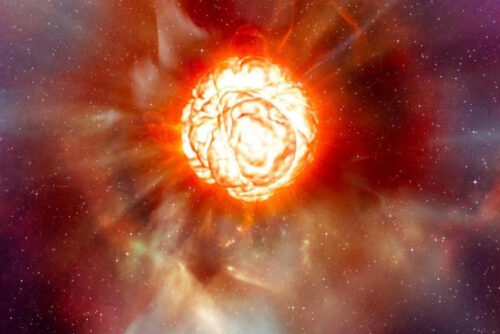
As the closest red supergiant to us, it holds particular interest and speculation among astronomers.
When it finally explodes, it is expected to briefly outshine the Moon. However, the exact timing of Betelgeuse’s supernova event remains uncertain, leading to ongoing speculation and curiosity.
Understanding Red Supergiant Supernovae
There are two prevailing models to explain red supergiant supernovae.
Both models predict that a red supergiant should exhibit significant dimming before its ultimate explosion, albeit on different timescales.
In the superwind model, the rapidly increasing fusion rate towards the end of a star’s life triggers a stellar wind.
This wind drives off the outer layer of the star over several decades, creating a circumstellar layer of cool gas that causes the star to appear extremely dim.
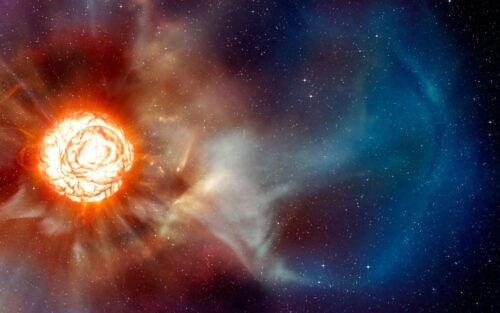
Conversely, the rapid outburst model predicts a final period of less than a year, during which more than a tenth of the star’s mass can be cast off.
This would result in a 100-fold dimming within the last few months of the star’s life.
Unveiling the Pre-Supernova Signatures
To investigate these models, researchers conducted a study focusing on observed red supergiant supernovae cases before their explosions.
Since most supernovae are only detected after the explosion, researchers had access to only a limited dataset of a dozen cases between 1999 and 2017.
However, in all these cases, the brightness of the stars remained relatively consistent in the years leading up to the supernova event.
This finding effectively rules out the superwind model and suggests that a red supergiant should experience significant dimming before exploding.
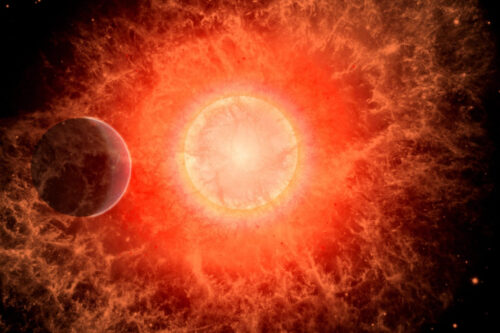
While the observations of Betelgeuse indicated a dimming event as it expelled a cloud of gas, it did not reach the level indicative of an imminent explosion.
Future Prospects and Red Supergiant Surveys
Unfortunately, the scarcity of red supergiant observations hinders our ability to witness rapid dimming events preceding the supernova.
Nevertheless, as more long-term sky surveys become available, it is expected that our understanding will greatly improve.
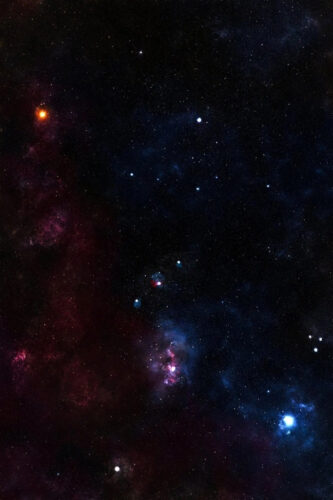
Betelgeuse, being extensively studied, may offer a unique opportunity to provide astronomers with an early warning of an impending supernova explosion.
The quest to decipher the secrets of red supergiant stars nearing the end of their lives continues. Recent research indicates that these massive stars likely undergo significant dimming prior to their spectacular supernova explosions.
While more observations are needed to confirm these findings, the discovery paves the way for enhanced understanding and potential early warnings of these awe-inspiring events.
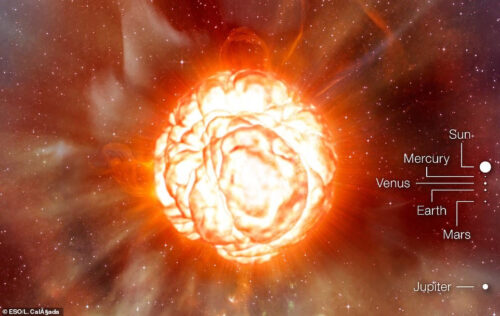
The possibility of Betelgeuse offering a supernova red alert serves as a tantalizing prospect for astronomers eager to unlock the mysteries of the universe’s most massive stellar explosions.
